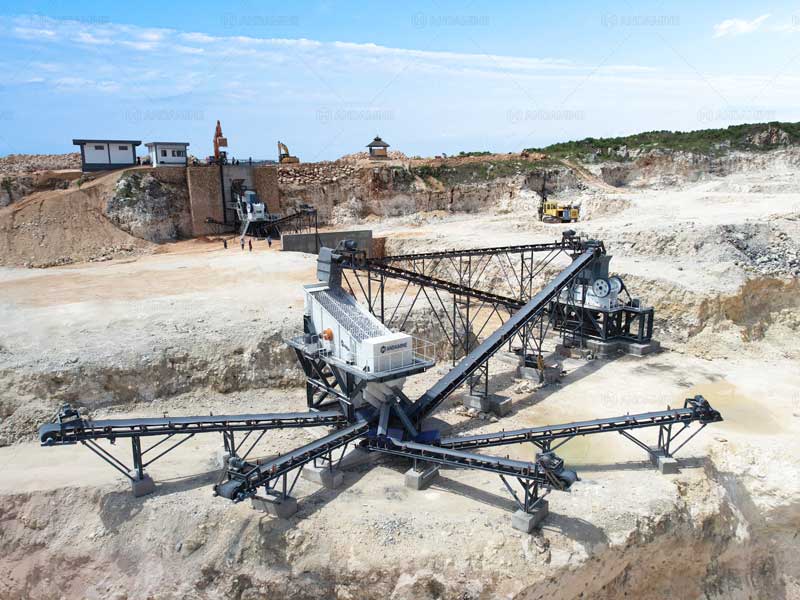From 80% of the raw material for cement production, to the raw material for construction aggregate, from the flux component of metallurgical melt, to the absorber of environmental protection and desulphurisation, limestone penetrates into every corner of modern industry. This seemingly ordinary rock (Mohs hardness of only 3-4, the main component of CaCO₃), its crushing process is not simple – due to the friability but low abrasiveness, the need for accurate grading control characteristics, limestone crushing on the suitability of the equipment requirements are much higher than granite, basalt and other hard rock.

Choosing the right crusher machine for limestone and process solution can not only improve production efficiency and product quality, but also reduce operating costs and environmental impact. Today, we analyse the limestone crushing expertise from application scenarios, characteristics, equipment selection, to programme layout, and help you find the most suitable crushing solution.
Various Applications of Limestone
To understand the speciality of limestone crushing, it is first necessary to clarify its multi-faceted value. The diversity of its application scenarios also implies the complexity of the crushing process.
Cement production
accounts for more than 80% of the total consumption of limestone. The production of 1 tonne of cement needs to consume about 1.2 tonnes of limestone, and requires the crushed limestone particle size ≤ 25mm (too coarse will lead to insufficient calcination, and too detailed rules to increase the ball mill power consumption).
Construction aggregate
With the depletion of natural sand resources, limestone has become the preferred choice for mechanism sand because of its stable composition and low impurities. High-quality mechanism sand should meet the requirements of “cubic grain shape (pin flake <10%), gradation (0-5mm/5-10mm/10-20mm adjustable), powder content <15%“.
Environmental protection desulphurisation
the “absorber core” of flue gas desulphurisation. Coal-fired power plants, iron and steel plants, and flue gas desulphurisation need to grind limestone to 20-50mm particles, mixed with water into a slurry, sprayed into the desulphurisation tower, absorbing SO₂, generating gypsum.
Chemical manufacturing
calcium carbonate, calcium hydroxide, and other basic raw materials for chemical products. High-purity limestone can be made into heavy calcium carbonate after calcination, digestion, and carbonisation, which is used as filler in plastics, rubber, coatings, and other industries, and the annual growth rate of market demand is over 8%.
The application of limestone covers the whole chain of industrial production, which means that its crushing needs to meet the multi-dimensional requirements of “fine crushing efficiency”, “particle shape control,” and “low wear” at the same time. The crushing process needs to meet the demands of “fine crushing efficiency”, “particle shape control”, and “low wear”.
From “Common Stone” to “Industrial Raw Material”: Limestone’s Uniqueness and Crushing Challenges
As a kind of sedimentary rock, limestone, whose main component is calcium carbonate, has some unique physical properties. From the hardness point of view, the Mohs hardness of limestone is between 3-4, and the compressive strength is about 80-140MPa, which belongs to the materials that are easier to break.
However, this does not mean that limestone crushing is not challenging. Due to its high brittleness and relatively loose internal structure, it is prone to brittle fracture, which produces more powder materials in the crushing process and affects the grade composition of the finished product. For these characteristics, crusher run limestone faces several major difficulties:
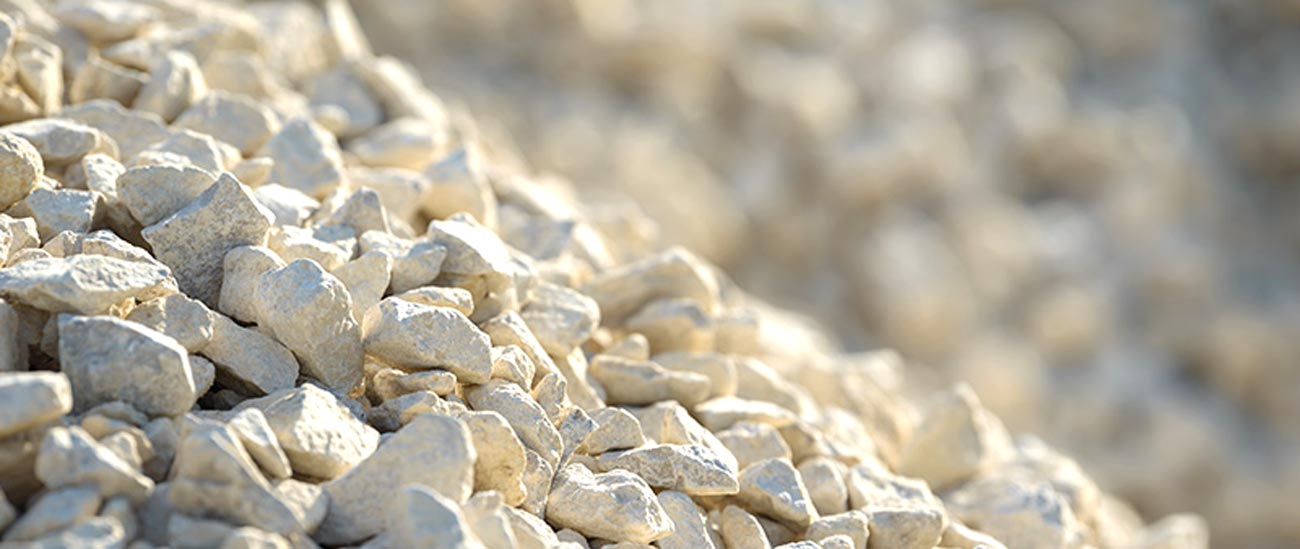
Particle size control
brittle materials are easily over-crushed, producing too much powder.
Adhesion and clogging
High-humidity materials tend to adhere to the crushing chamber and screen mesh.
Wear balance
although the hardness is not high, impurities such as quartz will still cause wear.
After understanding the characteristics of limestone and its crushing difficulties, we need to choose suitable crushing equipment according to these characteristics. Different types of crushers have different working principles and applicable conditions, and only by choosing the right equipment can we achieve efficient and economical crushing operations.
Types of Limestone Crusher: Matching the Limestone Characteristics
After understanding the characteristics and application requirements of limestone, the selection of lime stone crushers should be centred on “suitability”. In the field of limestone crushing, the commonly used equipment mainly includes jaw crusher, impact crusher, and cone crusher, which need to be selected according to the specific working conditions and requirements. And you can contact us to get the limestone crusher machine price.
Jaw Type Limestone Crusher – Coarse Crushing Limestone
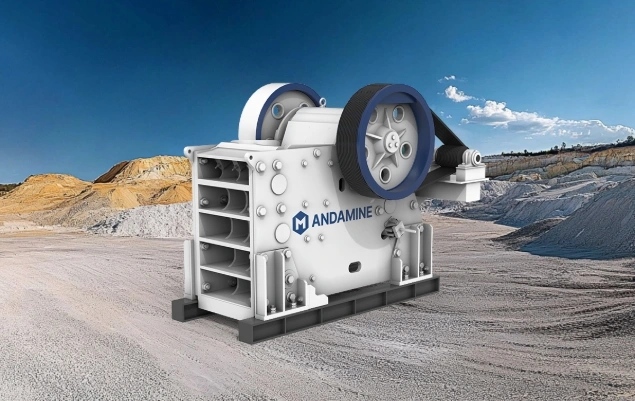
- Capacity: 20-1200 T/H
- Max. Feeder Size(mm): <680
- Application Scenario: mainly used for primary crushing of limestone.
- Features: Large feed size, capable of handling large limestone raw materials, can crush large limestone into medium-sized particles. The structure of the equipment is simple, easy to operate and maintain, and suitable for long-term use.
- Advantage: high reliability, suitable for production lines of various sizes, especially for occasions where large limestone need to be processed.
Impact Type Limestone Crusher – Medium Crushed Limestone

- Capacity: 20-900 T/H
- Max. Feeder Size(mm): <700
- Application Scenario: Suitable for secondary crushing and fine crushing of limestone.
- Characteristics: Crushing by impact action, capable of producing finished products with uniform grain shape. It is capable of handling limestone with a side length not exceeding 500mm.
- Advantage: Suitable for application scenarios that have high requirements on the grain shape of the finished product, such as building aggregates and road construction.
Cone Type Limestone Crusher – Large Scale Limestone Crushing
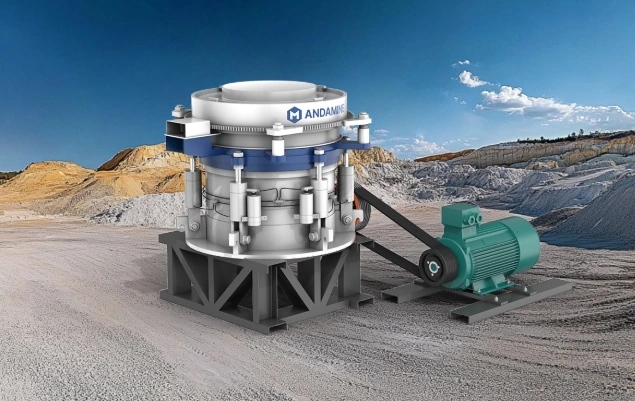
- Capacity: 50-1200 T/H
- Max. Feeder Size(mm): <350
- Application Scenario: suitable for medium and fine crushing of limestone, especially for large-scale production lines.
- Features: high crushing efficiency, low energy consumption, adaptability to limestone of different hardness. Stable equipment operation, low maintenance cost.
- Advantages: suitable for production lines requiring high output and high stability, can handle limestone of medium hardness and above.
3 in 1 Mobile Impact Crusher for Limestone -Easy to Move

- Capacity: 50-350 T/H
- Max. Feeder Size(mm): <600
- Output Size(mm): 5-100
- Main Crusher: Impact Crusher
- Advantage: 3 in 1(feeding, crushing, and screening) mobile stone crusher can be applied for different aggregate supply businesses, for example, road project, building project, it can produce different size aggregates like 0-5mm, 5-10mm, 10-20mm, 20-40mm, etc.
Choosing the right equipment is only the first step; how to combine this equipment into an efficient production line is equally important. Different production line configurations can meet different production needs and site conditions.
Limestone Crushing Solution: Stationary Plant VS Mobile Plant
According to the scale of production, site conditions, and use requirements, Andamine limestone crushing production line has two configurations: stationary and mobile.
- For large cement plants (annual processing capacity of 500,000 tonnes +), centralised aggregate production lines (e.g., mines with fixed crushing lines), long-term stable supply of FGD agent projects, etc., fixed crushing plants are the preferred choice for “cost reduction and efficiency”.
- For small limestone mines (without fixed roads), temporary infrastructure projects (e.g. road construction requiring on-site sand production), remote areas (high cost of transporting raw materials), emergency protection (e.g. post-disaster reconstruction of aggregate supply), the mobile crushing plant’s integration + mobility makes it a good helper for customers to “change as needed”. Andamine’s mobile crushing plant has been a great help to our customers in their “on-demand” endeavours.
Here are Andamine limestone crushing lines designed for our customers:
200T/H Stationary Limestone Crushing Plant
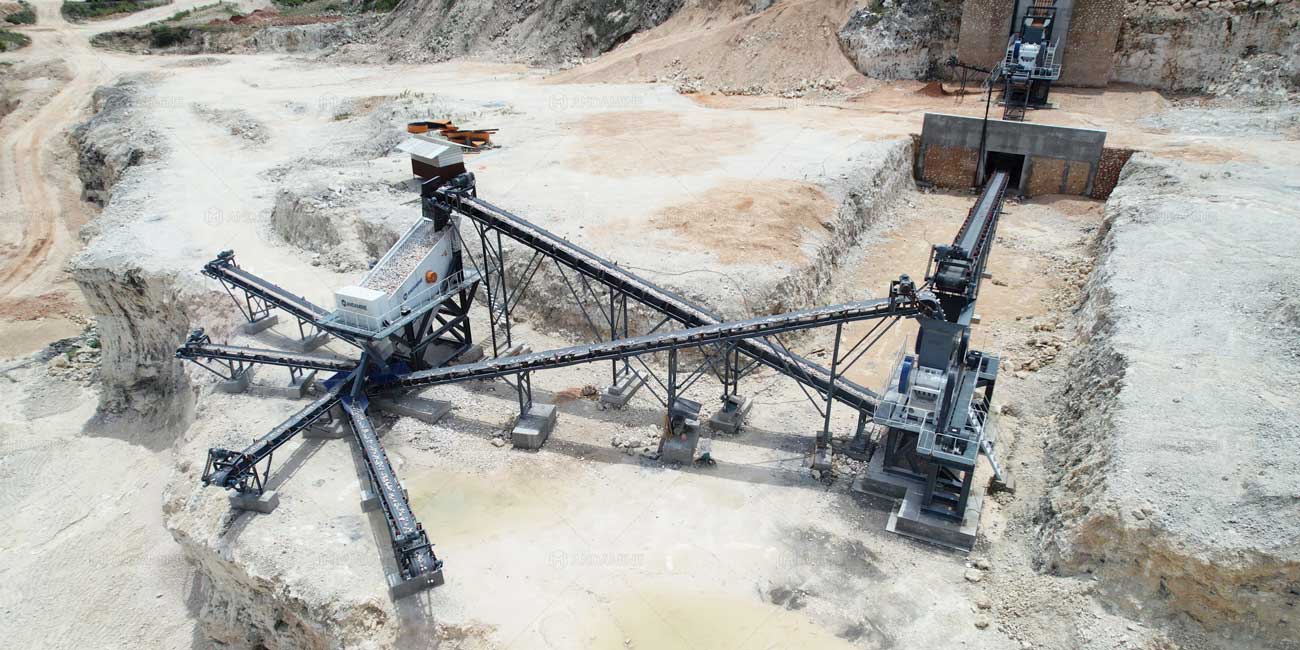
- Project Application: Crushing limestone for producing construction aggregates
- Location: Indonesia
- Finished product size: 0-5-12-19 mm
- Configuration: Vibration feeder, jaw crusher, conveying belts, vibrating screen
- Customer feedback: “Andamine stationary crusher plant can be used to create a limestone crushing solution exactly according to our production needs. Moreover, this limestone crushing equipment is equipped with a remote control, which can regulate the dosing speed and is very convenient to operate.”
100T/H Mobile Limestone Crusher Plant
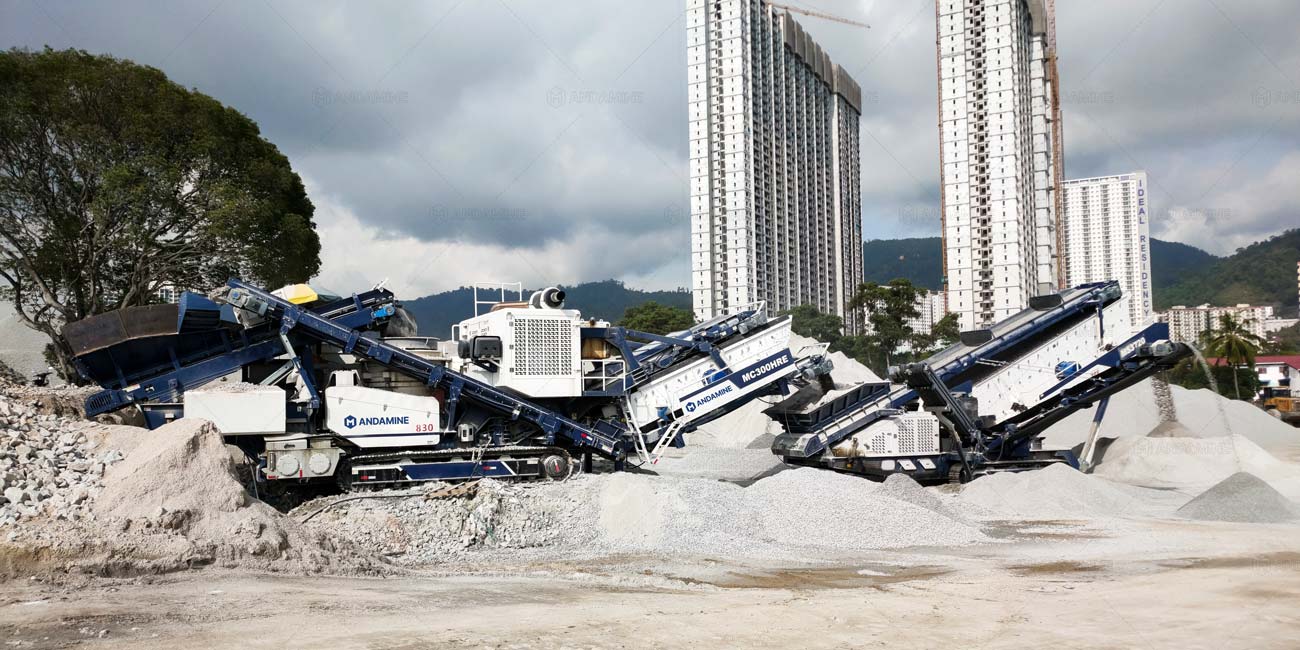
- Project Application: Large-scale aggregate production
- Location: Indonesia
- Finished product size: 5-10, 10-15 mm
- Configuration: Vibration feeder, impact crusher, conveying belts
- Customer feedback: “This mobile limestone crusher cement plant adopts a wheeled chassis, which can be driven directly to the raw material site; it integrates feeding, crushing, and screening. And it integrates the crushing process, which helps us to reduce the operation cost. From ordering to installation, it can be put into operation in 14 days!”
How to Choose A Reliable Limestone Crusher-3 Key Points
In the face of a wide range of crushing equipment on the market, how to choose the best crusher for limestone? The key is to grasp the following three points:
1. Adaptability: whether the performance of the equipment matches the characteristics of limestone.
Priority is given to equipment designed for limestone with low to medium hardness and low abrasiveness. For example, choose a jaw limestone crusher machine for coarse crushing (anti-impact), a multi-cylinder hydraulic cone crusher for medium-fine crushing (low abrasion), and an impact crusher for medium crushing (excellent grain shape) – avoid using a hammer crusher to handle large limestone (easy to wear).
2. Flexibility of the solution: can it be tailored to the needs of the scenario?
Reliable suppliers can not only provide a single limestone crusher for sale, but also customise a stationary or mobile plant solution according to the needs of your production line (e.g., fine crushing efficiency in a cement plant, grain shape requirements in an aggregate plant). For example, “coarse crushing + screening” integrated design for desulphurisation agent project (to ensure that the proportion of 20-50mm particle size>90%), and “iron remover + multi-stage screening” for mechanism sand project (to control the powder content <15%).
3. Service guarantee: whether to solve the long-term use of pain points
The “long-term challenges” of limestone crushing include equipment wear, maintenance costs, environmental compliance, etc. Reliable limestone crusher manufacturers should provide: wear-resistant material commitment (e.g., jaw life ≥ 2 years); fast response after-sales team (on-site maintenance within 24 hours); environmental protection programme design (pulse dust removal, noise reduction measures).
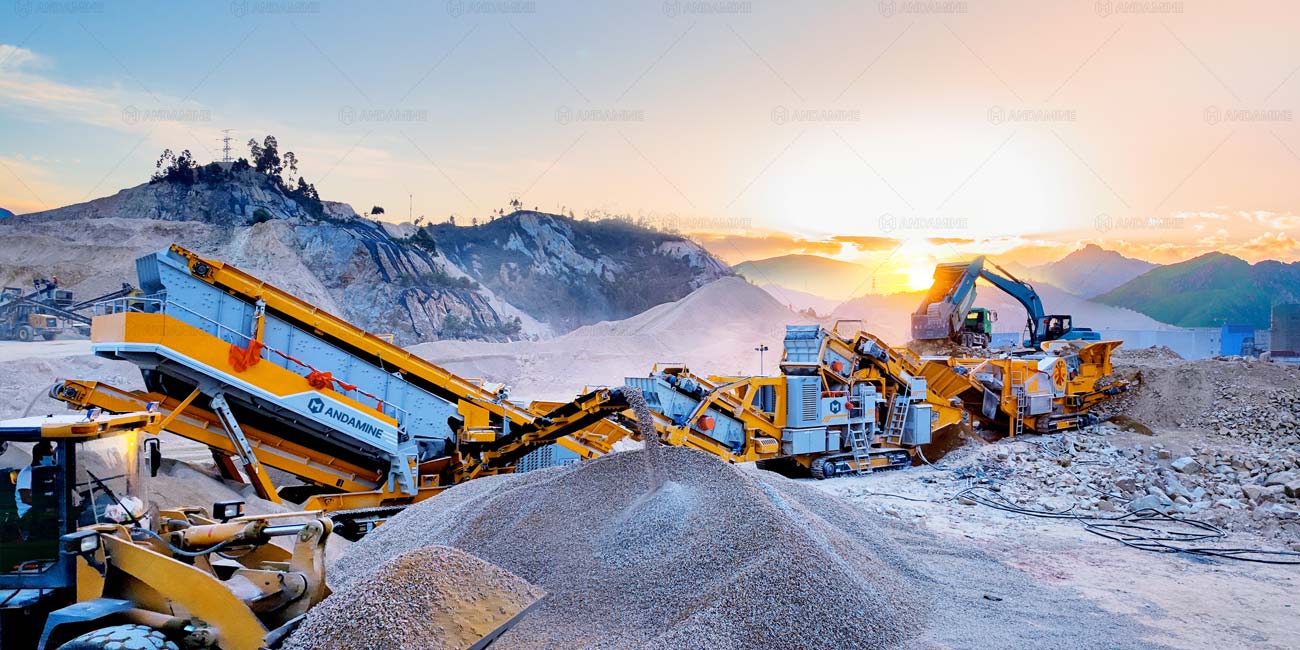
For the characteristics of limestone, as a company with 40 years of experience in the field of crushing equipment, we not only provide core equipment such as jaw crusher, cone crusher, impact crusher, etc., but also customise the overall solution of a stationary or mobile plant according to the needs of your production line. From process design to on-site commissioning, from equipment maintenance to upgrading services, we use our professional experience to provide you with one-stop solutions.
If you are troubled by the low efficiency, high wear and tear, and poor grain shape of limestone crushing, welcome to contact us. Let us use our professional technology and rich experience to build an efficient and economical limestone crushing production line for you, and create greater value together.


